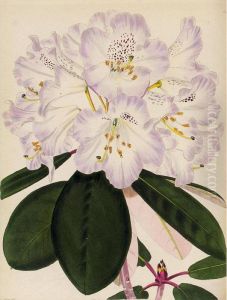Conrad Loddiges Paintings
Conrad Loddiges was a notable figure in horticulture rather than a traditional artist. Born in 1738 in Hanover, Germany, Loddiges moved to England and became one of the most prominent nurserymen of his time, contributing significantly to the field of botany and the study of exotic plants.
In 1771, Loddiges established the Loddiges nursery and botanical garden in Hackney, East London. This establishment became famous for its extensive collection of exotic and rare plants from around the world, many of which were introduced to Britain for the first time. The garden became a center for botanical study and a destination for plant enthusiasts, scholars, and scientists.
During his lifetime, Loddiges was known for his pioneering work in horticulture, particularly in the cultivation and hybridization of plants. He was among the first to use heated greenhouses, which allowed him to grow tropical plants in England's temperate climate. His nursery also played a critical role in the development of the Wardian case, an early type of sealed protective container for plants, which facilitated the transport of live plants across long distances without harm.
Loddiges published several catalogues of the plants he cultivated, which were widely distributed and contributed to the spread of botanical knowledge. His nursery remained a family business and continued to flourish under his son, George Loddiges, who was also an esteemed botanist.
Conrad Loddiges passed away in 1826, but his legacy lived on through the continued operation of his nursery and through the plants and techniques he introduced to the horticultural world. Although not an artist in the traditional sense, Loddiges' work had a lasting impact on the aesthetics of English gardens and the practice of horticulture.
